If you’ve lost a loved one—or are a “summer person”—Autumn can feel like a time of death and grieving.
Trees are stripped bare, skeletons of goldenrod bob in the wind, and every day, geese flee south.
But autumn is also good at soothing. There are days peppered with sunshine when the last foliage seems to glow. There is warm apple cider, fire, and wool socks.
There are treasures buried beneath the leaves. My mother-in-law, Jill, would have found every fallen chestnut.
In my most recent book, Seasonal Family Almanac: Recipes, Rituals, and Crafts to Embrace the Magic of the Year, my co-author Jana wrote, “This beautiful dance of life, death, and entropy has happened for millions of years, each year adding fertile layers to the ancestral soil.”
And while our modern day Halloween rituals have made somewhat of a caricature out of death, Halloween evolved from the pagan festival of Samhain (pronounced sah-win), which honored summer’s “end”—or death—in Gaelic.
Jana wrote, “Samhain is considered a liminal time, when the veil between the world of the living and the world of the spirits becomes thin, allowing our ancestors to return to visit us.”
And here’s my favorite part: “Offerings of favorite foods were put out to feed the beloved spirits, and hollowed-out turnips were lit with candles to help ancestors find their way back home.”
Hollowed-out turnips were the original jack-o-lantern.
For those of you hemming and hawing about whether spirits are “real,” stick with me.
Many cultures have traditions to celebrate deceased loved ones this time of year, from Giorno dei Morti in Italy to Dia de los Muertos in Mexico.
(SIDENOTE: The family-friendly movie Coco is absolutely beautiful, inspired by the Mexican Day of the Dead, and complete with magnificent altars.)
When my children were little we began an autumnal tradition of making an ancestor altar. Every year it looks different, but the components are relatively the same:
Pictures of friends and family members in the “spirit world”—yes, this includes pets!
If available, an item that belonged to or represents each person (for example, Grandma Jill’s woven potholders, or my grandfather’s Kiddush cups)
A bouquet or single stem of wildflowers
Other natural items the children have found that represent this liminal time of shedding and composting (a red maple leaf, deer antler, snake skin, an owl figurine)
A candle: if using a real candle, please remember to put it out!
Now, at ages 6 and 8, the girls love to build the altar themselves, which is often spilling with their magical, handmade trinkets.
Don’t know who your ancestors are? That’s OK. An “ancestor” altar can be in honor of anyone you know who has passed, including animals. If you don’t know anyone who has passed, it can simply represent the earth’s natural retreat into winter.
Let’s revisit the idea of whether spirits are “real” for a moment.
I do believe that there is magic we can’t explain, and I’ve had many uncanny experiences where I felt in direct contact with a loved one who was no longer alive.
But more so, I believe that when we remember our deceased loved ones through pictures, heirlooms, memories, stories, and FOOD, we keep them alive “in spirit.”
And in the process of remembering them and passing down memories to our children, we remember who we are.
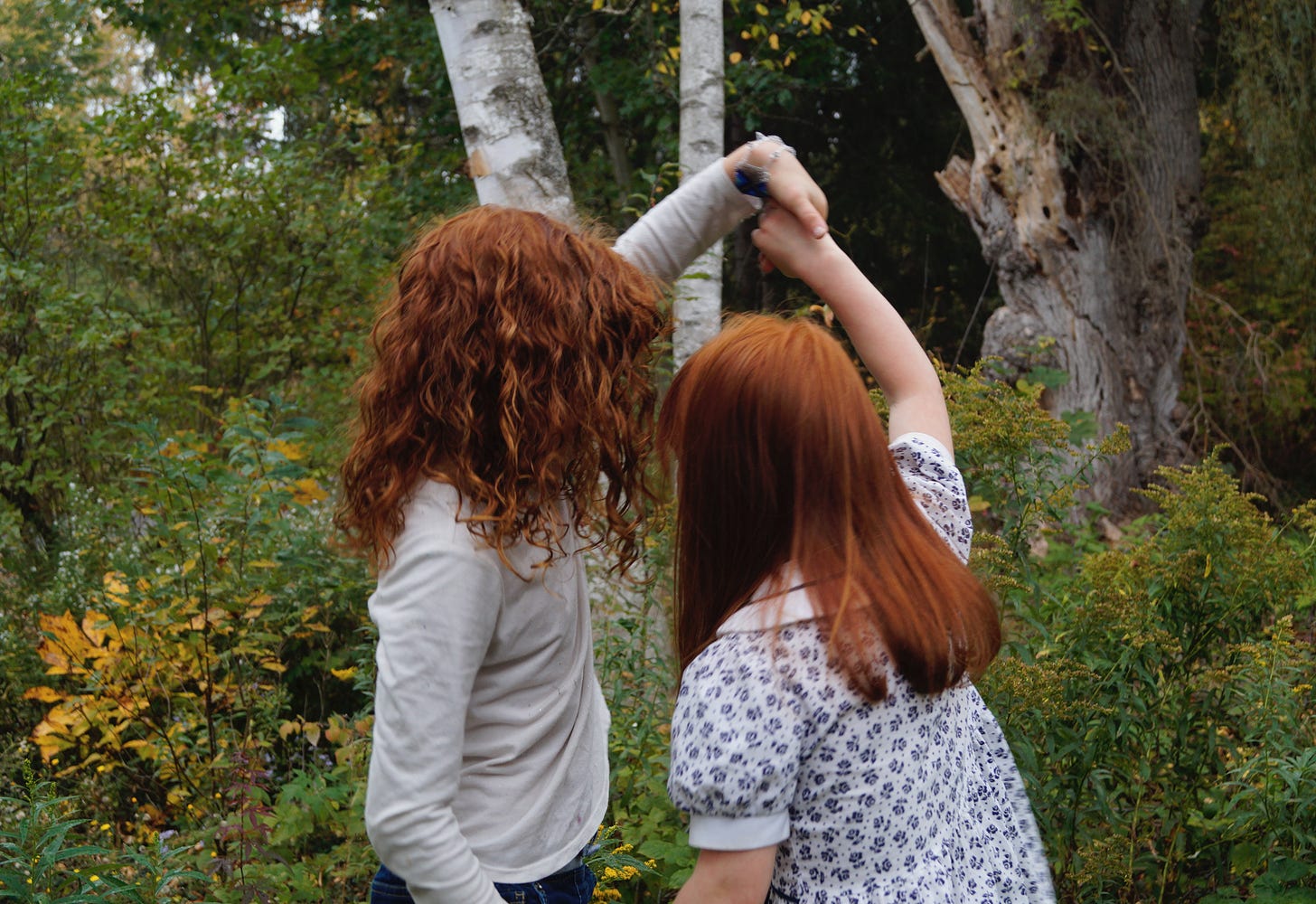
This is where my favorite part comes in: food.
Add a plate of food to your ancestor altar, along with their favorite wine, tea, coffee,—or spirits! When Grandma Jill died two weekends ago, both Bobby and I had a toast of whiskey.
The food plate can be small portions of whatever you’re serving, placed on the altar.
Or, it can be their favorite food or a dish inspired by them, which is an excellent opportunity to teach your children where they come from.
One year I made these Jack-o-Lantern Carrot Coconut Truffles in honor of my Nonna Vera.
When the day is over, the candle blown out, and the kitchen cleaned… I like to bring the plate and beverage outside and leave them at the base of a giant maple tree. I imagine the essence of the food being absorbed by our ancestors (before the neighborhood raccoon licks it clean…nom nom).
Remembering our ancestors is an ancient, beautiful ritual that anyone, from any background, can practice—with your own twist—alongside the fanfare of modern-day Halloween.
I would love to hear how you honor deceased loved ones in your home—in any way! It can be as simple as displaying a photo on the wall. Please share in the comments:
With candles burning bright,
♡ Emma
PS. If you missed the October Meal Plan, it’s filled with easy, drool-worthy, autumnal recipes and still available along with all six meal plans when you upgrade your membership.
October Meal Plan 🍂🎃🍻
If you’re a paid sub and want to head straight to download the October Meal Plan, scroll to the bottom.

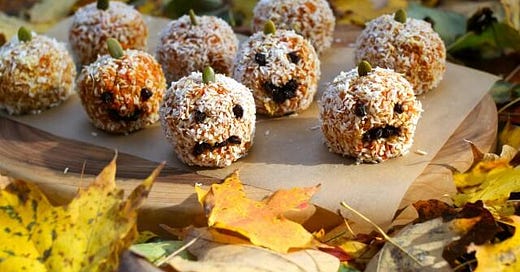


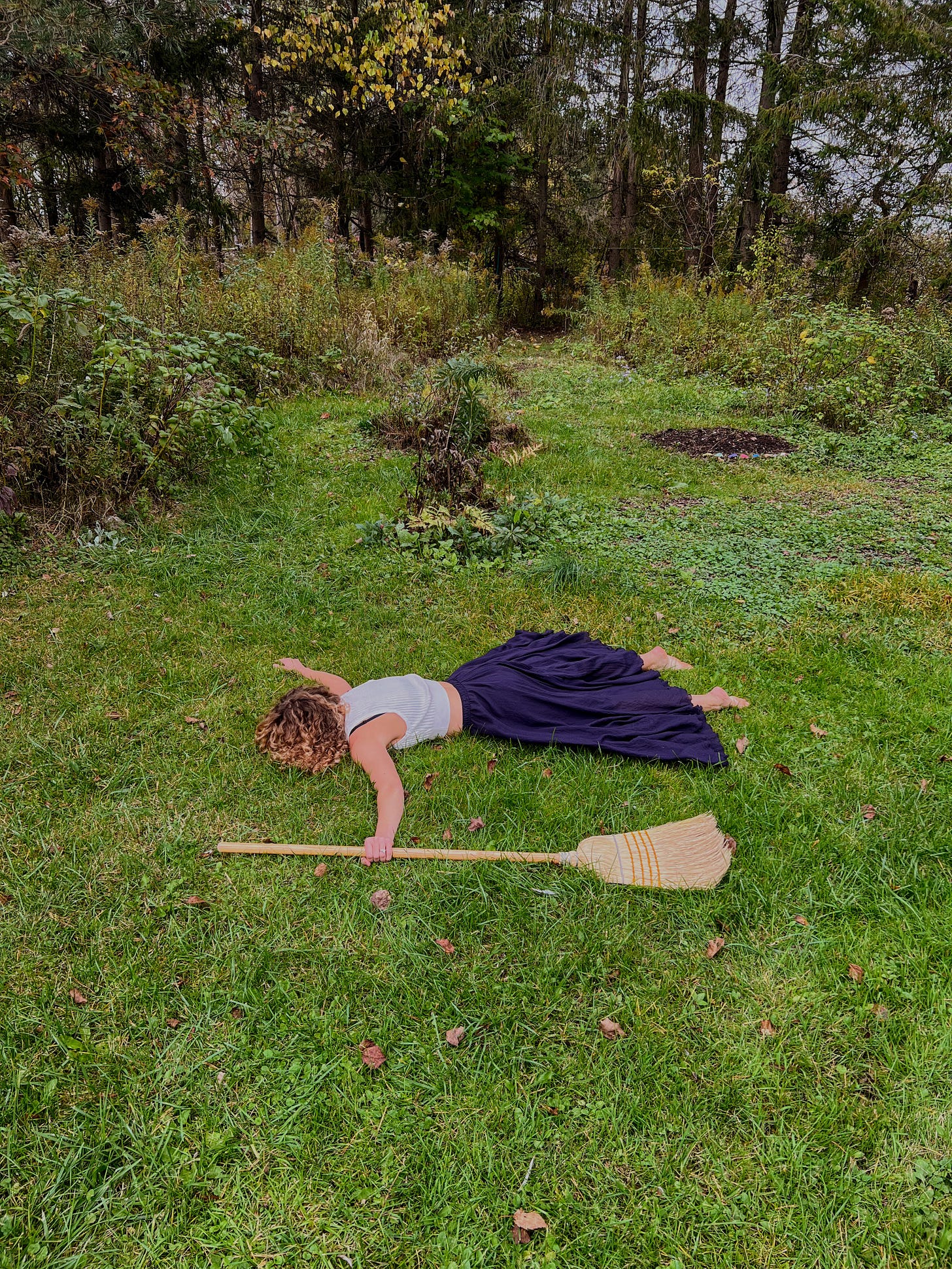
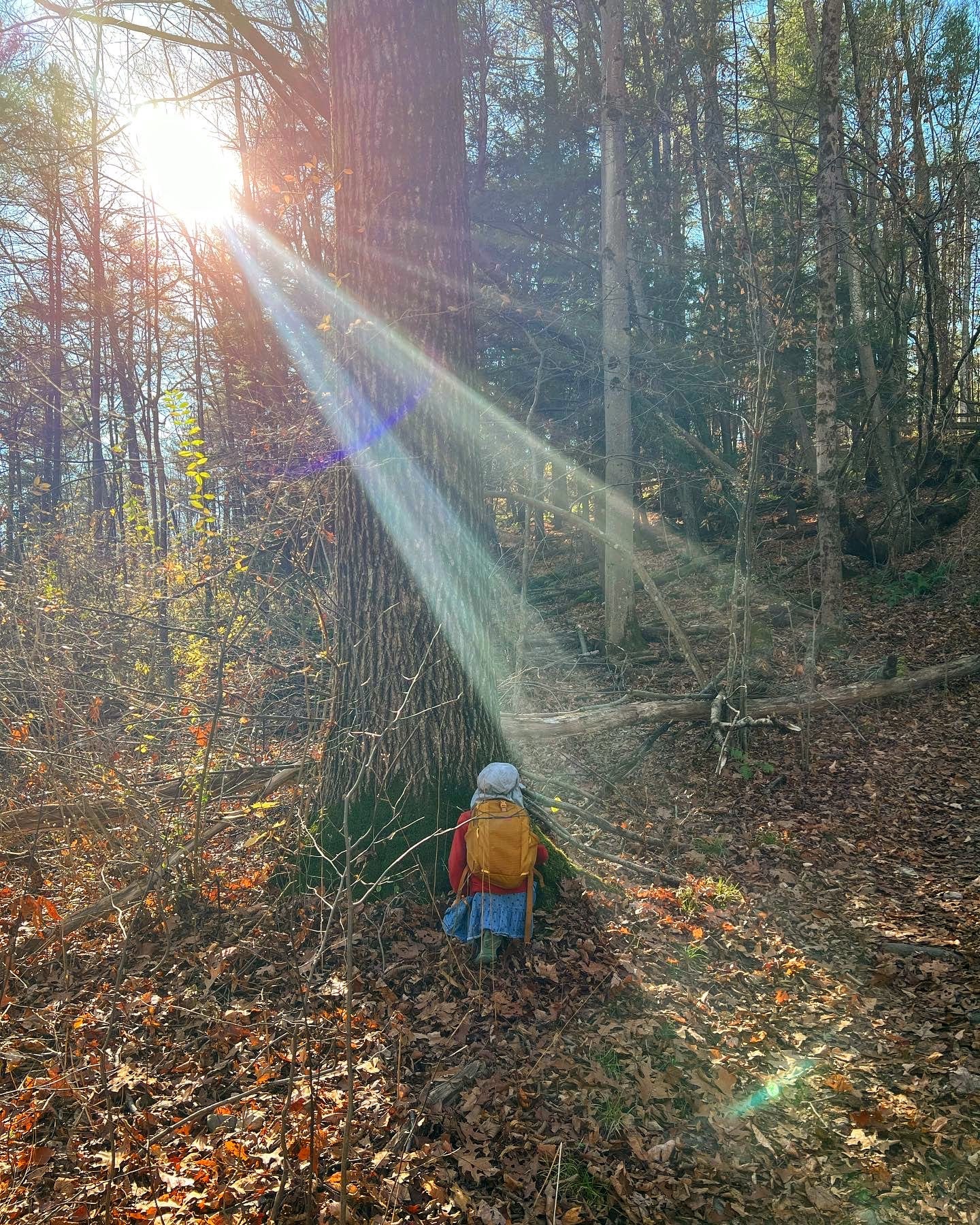
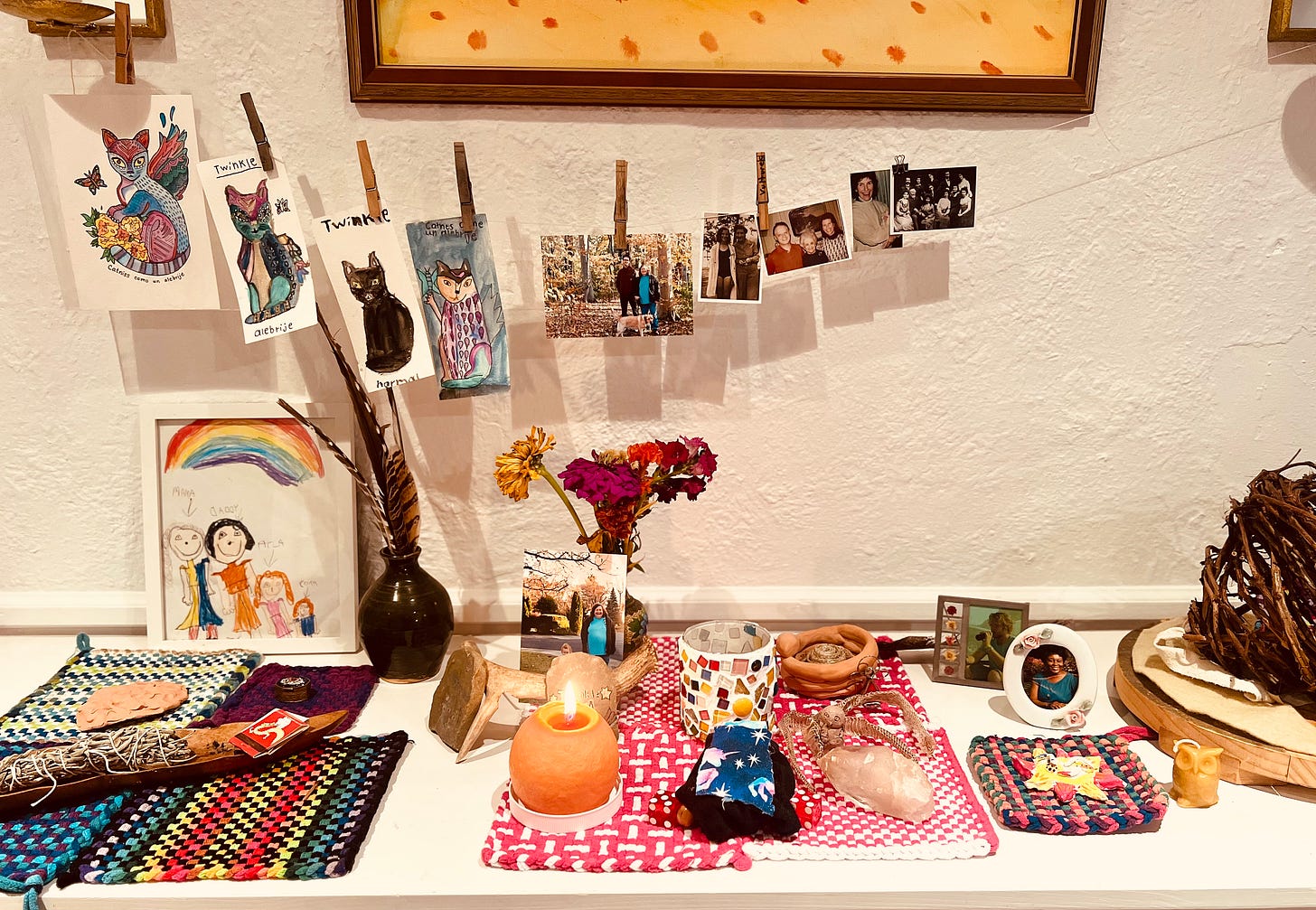


You've inspired me to start an alter 😍
I love everything about this, Emma! I had never learned about Giorno dei Morti. Did your mama and nona celebrate this growing up? As you know, I've built an altar, or *ofrenda* every year for my late mama and other ancestors since living in Oaxaca in 2010. Its been a heartfelt and cathartic tradition! I love making her favorite foods and putting her favorite flowers, candies and jewelry out on the altar so her spirit can delight in luxury while visiting during the liminal time of year. <3